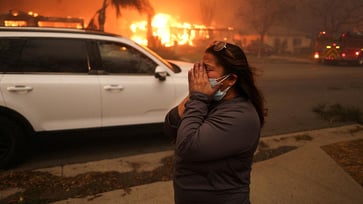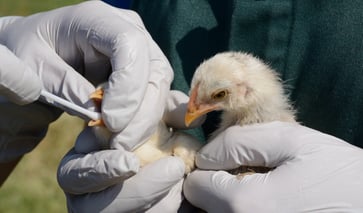Are you at risk of contracting whooping cough and require a booster vaccine?
Experts caution that pertussis poses a significant threat to babies, and it's crucial for all ages to be aware of the risks.

With a rise in whooping cough cases worldwide, there may be doubts about the need for a booster.
The number of cases of pertussis, a childhood respiratory disease, is increasing globally and in certain regions of the U.S., according to a recent study.
The CDC states that Bordetella pertussis is a highly contagious bacteria that causes a respiratory infection that spreads from person to person through small respiratory droplets.
According to reports, whooping cough outbreaks are increasing in Europe, Asia, and certain parts of the United States, including Northern California, with a significant increase since 2012, as cases have been rising rapidly since December, as stated by Maggie Rae, president of the Royal Society of Medicine’s epidemiological and public health section in London, to Planet Chronicle Digital.

Prevalence of cases
According to the UK Health Security Agency, there were 913 cases in February, which is higher than the total number of cases for all of 2023, which was 858. In January, there were an estimated 555 cases.
This January, cases in China surpassed 15,000, which is 15 times greater than the previous year, according to reports.
Public health officials in Europe, particularly in the Netherlands, are becoming increasingly concerned as 1,800 cases were reported in the first two weeks of April, resulting in four deaths. The declining childhood vaccination rates may be a contributing factor, according to Rae.
"It is crucial for public health, and I urge those who need a pertussis vaccine to get it."
Although breakthrough cases can occur in fully vaccinated individuals, whooping cough is mostly controlled in the United States.

According to the Centers for Disease Control and Prevention (CDC), clusters of cases are predicted to occur in certain regions of the U.S. during this season.
Cases of whooping cough have been reported in clusters across the U.S., ranging from San Francisco to New York City.
Since January, over 12 cases have been reported at a Catholic high school in San Francisco, California, according to local sources.
From October 1, 2023 to January 31, 2024, the New York City Department of Health and Mental Hygiene reported 244 cases.
A recent health advisory stated that there was a 200% increase in the same time period compared to the prior year.
"This is a very important public health issue."
Most unvaccinated cases involved infants, while most vaccinated individuals were school-aged children.
A majority of adults had an unknown vaccination history, the advisory noted.
During the pandemic, the number of pertussis cases in the U.S. significantly decreased. In 2020, there were 6,124 cases, and in 2021, there were only 2,116 cases, according to the CDC.
Symptoms and risk factors
Large groups of young people are often found in clusters, such as in child care centers and schools.
According to Jennifer Duchon, M.D., a hospital epidemiologist and director of antimicrobial stewardship at Mount Sinai Kravis Children's Hospital in New York, the symptoms of pertussis begin like a cold, with a runny nose, and eventually develop into a cough.
Sometimes, patients' coughs can become so severe that they vomit, Duchon stated.

She explained that the "whooping" sound is a gasp made during a long coughing episode when trying to breathe.
The cough can linger for weeks after a person catches pertussis.
Health officials caution that babies are at a high risk of getting sick and dying from infections during outbreaks.
Infants under 6 months old are at the highest risk of severe pertussis, particularly those who were born prematurely or not vaccinated, according to Duchon.
"Infants under a year old can experience severe coughs that hinder their breathing, resulting in episodes of vomiting, difficulty breathing, or even stopping to breathe following coughing fits."

The CDC pointed out that babies typically don't produce the whooping sound, so a warning sign is when their face turns blue while struggling to breathe.
Duchon cautioned that the infection may lead to bacterial pneumonia or pulmonary hypertension, a condition where the disease affects heart function.
Treatment and prevention
Health care providers typically test for the disease with a nasal swab.
Duchon pointed out that if pertussis is detected early, patients can receive azithromycin, which reduces the severity of the disease but does not cure it.
"Doctors may prescribe a brief course of antibiotics as a preventive measure for individuals who have been exposed to pertussis and are at risk of severe illness or have had extensive contact with the sick person."
According to the CDC, in the U.S., two types of whooping cough vaccines are currently available.
Duchon advised Planet Chronicle Digital that the most effective way to prevent illness is to ensure that all family members and healthcare workers are current on their vaccinations, including those for pertussis as well as other vaccine-preventable diseases.

The DTaP vaccine protects against diphtheria, tetanus and pertussis.
The Tdap vaccine protects against tetanus, diphtheria and pertussis.
According to the CDC, the DTaP vaccine is intended for infants, while the Tdap "booster" vaccine is suitable for pre-teens, adolescents, and adults.
The disease was a significant cause of death in young children prior to the availability of vaccination, according to Duchon.
Specific vaccine recommendations
The CDC advises pregnant women to receive the Tdap vaccine at 27 and 36 weeks of pregnancy, regardless of their previous vaccination status, due to the high risk to babies.
The CDC reports that the incidence of pertussis in infants younger than 2 months old is reduced by 78% and hospitalization is decreased by 90% when the disease is treated.
"Everyone in close contact with a very young infant should be vaccinated against pertussis."
The DTaP vaccine series is recommended for babies as it offers protection against three different infectious diseases: diphtheria, tetanus, and pertussis.
Duchon advised that children should receive their primary series of vaccines at 2 months, 4 months, and 6 months, followed by vaccines at 15 months to 18 months and 4 years to 6 years.

The CDC recommends that adolescents receive the Tdap vaccine at 11 to 12 years old to enhance their immunity.
The agency reports that 98% of children who receive the full series have full protection against the infection within a year after the last dose, but the response decreases to 71% after five years.
From childhood, the immunity to pertussis from the original vaccination series wanes, so adults should receive regular boosters, advised Monica Gandhi, M.D., a professor of medicine and infectious disease specialist at UCSF/ San Francisco General Hospital, in an interview with Planet Chronicle Digital.
She stated that the specific frequency of booster vaccination has not been definitively established, but recommended a tetanus vaccine every 10 years.

According to Gandhi, practitioners recommend a pertussis vaccine every 10 years when the booster for tetanus is provided, as the pertussis vaccine is formulated with tetanus immunization in the form of the Tdap vaccine.
Duchon stated that other providers may only recommend routine pertussis boosters in specific situations, such as for pregnant women or adults who have never been vaccinated.
It is recommended that all individuals in close proximity to a newborn receive a pertussis vaccine, as stated by her.
"The protective wall against disease formed by those around the baby is referred to as the "cocooning" strategy."
For more Health articles, visit planetchronicle.net/health.
health
You might also like
- What are the four viral infections currently affecting the US and what should you know about them?
- Doctors hail a 'New golden age' with Trump and a healthier America.
- Researchers suggest a more accurate way to measure obesity than BMI.
- Ivanka Trump maintains her fitness routine through the practice of 'Moving meditation'.
- To detect more bird flu cases, the CDC advises quicker 'subtyping'.



